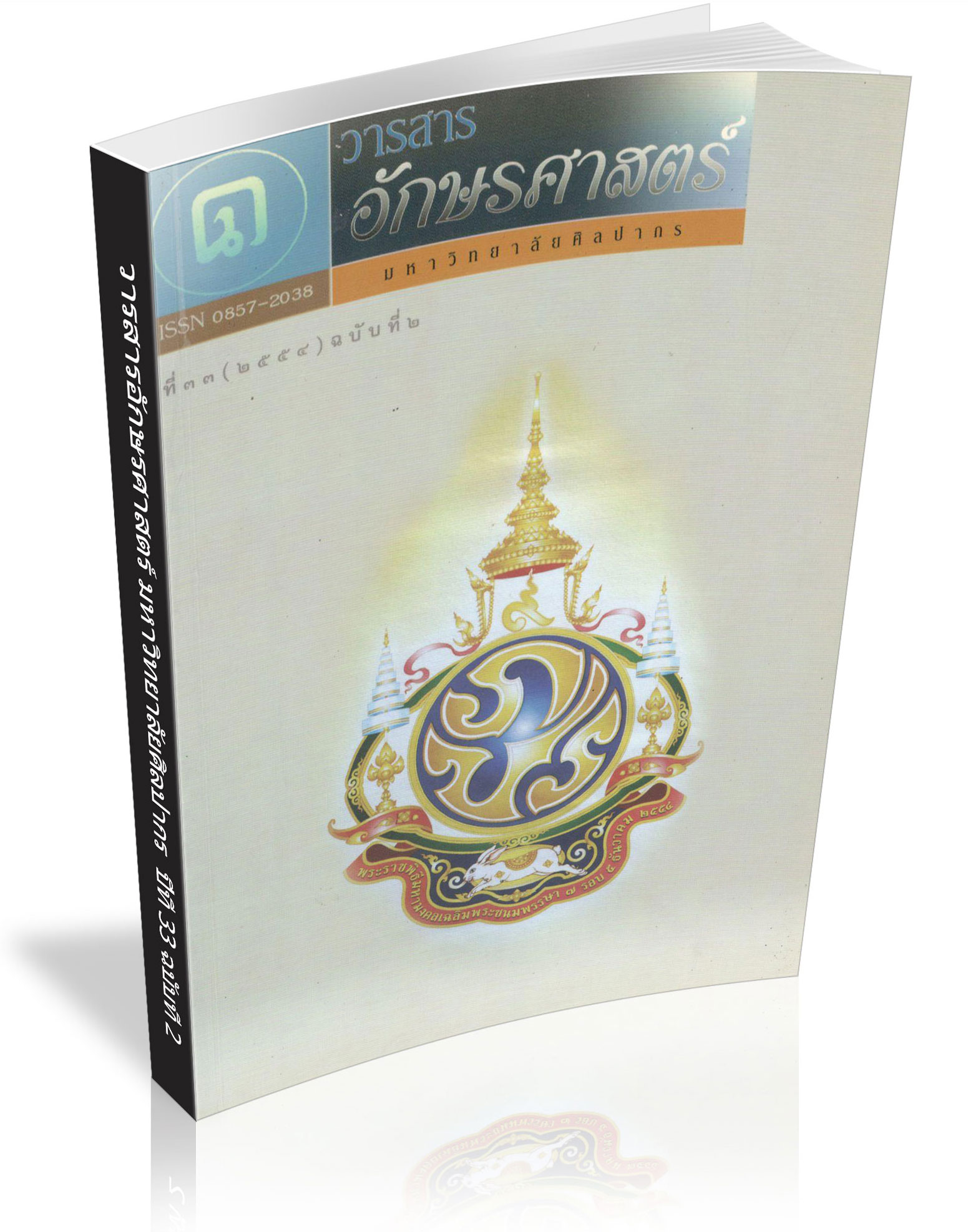Thainess through Exotic Accent : A Discursive Study of Representation of Thailand in Lonely Planet
Keywords:
travel writing, orientalism, discourseAbstract
This article aims to study the construction of "Thainess” in the Lonely Planet Giude (2009) through a discursive approach and Edward Said's conception of Orientalism. It is found that the content structure focuses on a socio-cultural overview of Thailand and details of tourist attractous. Otheraspects of "Thainess” are constructed through the myths of quality travellers, amazement of "Thainess", political instability, inadequate freedom of expression, social problems and othered Thai habits. The findings prove that the author, as a Westerner, still understands "Thainess" through an imperialist lens. The discourse is parallel with other travel writings by Western travellers since the 19th century.
Downloads
References
นพมาตร พวงสุวรรณ. “รอยยิ้มแห่งมายา” : “ฝรั่ง” และการสร้างจินตนาการเรื่องเมืองไทยในนวนิยายตะวันตกร่วมสมัย. วิทยานิพนธ์ปริญญาดุษฎีบัณฑิต สาขาวรรณคดีและวรรณคดีเปรียบเทียบ คณะอักษรศาสตร์ จุฬาลงกรณ์มหาวิทยาลัย, ๒๕๕๑.
วิริยา วิฑูรย์สฤษฏ์ศิลป์. การศึกษาอัตลักษณ์คนชั้นกลางไทยผ่านการเล่าเรื่องในสื่อหนังสือบันทึกการเดินทาง. วิทยานิพนธ์ปริญญามหาบัณฑิต คณะวารสารศาสตร์และสื่อสารมวลชน มหาวิทยาลัยธรรมศาสตร์, ๒๕๔๘.
Dann, Caron. Eastgate. Imagining Siam : A Traveller's Literary Guide to Thailand. Clayton : Monash University Press, 2008.
Haggan, Graham. The Postcolonial Exotic : Marketing the Margins. London and New York : Routledge, 2001.
Ip, Janice Yui Ling. "Analyzing tourism discourse : A case study of a Hong Kong travel brochure." LCOM : Online Journal of the ‘Programme in Language and Communication’. 1 (2008) : 1-19.
Downloads
Published
How to Cite
Issue
Section
License
ผู้เขียนบทความต้องยินยอมในข้อกำหนดต่าง ๆ ของวารสารก่อนส่งบทความตีพิมพ์




